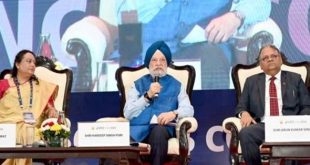Despite all the achievements of 'Make in India', the share of manufacturing in GDP has not increased. This is a matter of concern. Despite progress on many fronts, there are still many challenges that are hindering the realization of the potential of 'Make in India'. A major challenge is the high cost of logistics. This makes Indian products less competitive compared to countries like Vietnam and Mexico. The share of manufacturing in GDP has been stuck at 17 percent for a long time. This figure is behind the target of increasing the share of manufacturing in GDP to 25 percent by 2025. The 'Make in India' initiative aimed to create 10 crore jobs in the manufacturing sector by 2022. This target could not be achieved. At the same time, the number of people working in the manufacturing sector decreased to 3.57 crore in 2023, whereas the number of people working in this sector was 5.13 crore in 2017.
Apart from this, dependence on imported goods is a big issue. This increases production costs for local entrepreneurs and makes it difficult for them to become part of the global supply chain. The Central Government has taken several steps to improve the ease of doing business and the necessary process to encourage manufacturing. But here the role of states becomes important. In India, land is a state subject. The success of 'Make in India' largely depends on how states proceed with the necessary reforms and what kind of policies they implement. Labor is in the concurrent list. This means that both the Center and the states have a role to play in promoting labor reforms. Labor reforms are implemented by state governments. For example, in many states the process of land acquisition is still very complex and labor laws are also quite strict. Due to this, entrepreneurs shy away from investing and industrial expansion becomes limited. States will have to work on simplifying the regulatory framework and creating investment-friendly policies. This is necessary to take advantage of the manufacturing potential in India. Availability of capital at low cost is also very low.
 look news india
look news india



